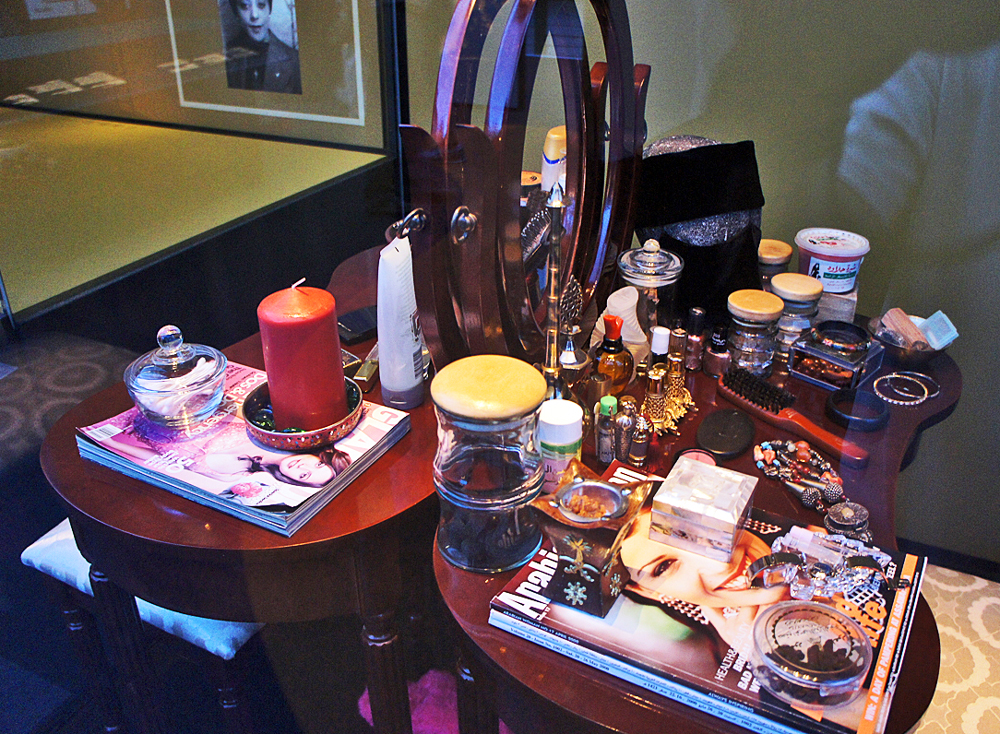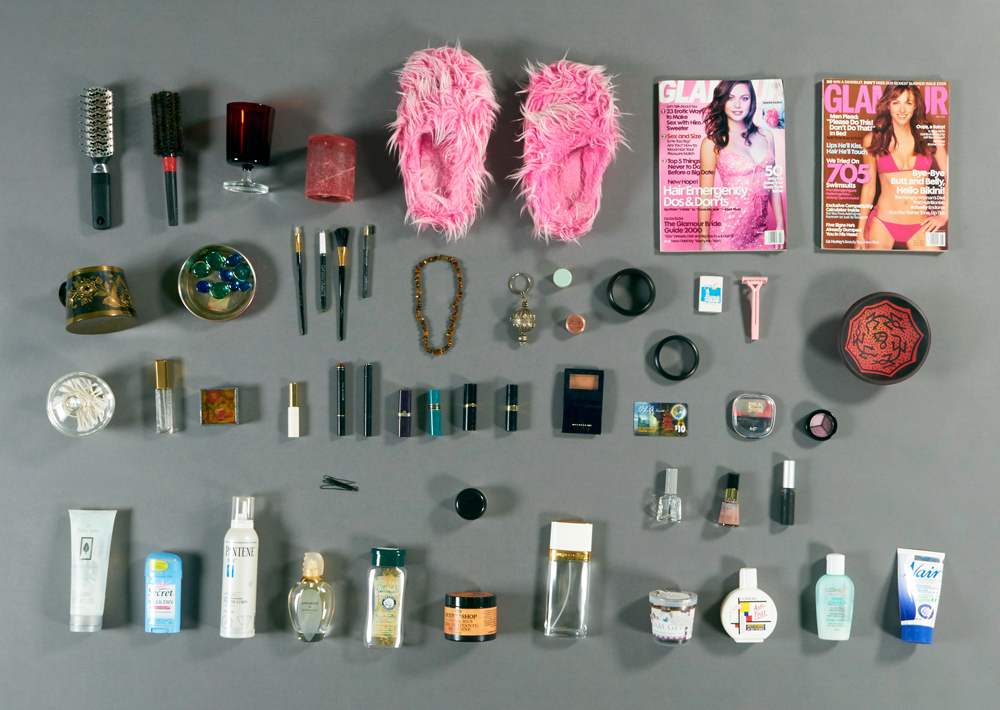Conservation team helps tell story of diversity
One of the sections of Gallery 3 in the Canadian History Hall tells the story of diversity and human rights in Canada. As part of that story, the exhibition team wanted to shine a light on multiple identities — not only within a country but, also, within an individual.
As curator James Trepanier explains it, “People wear multiple layers of identity at once.” To illustrate this idea, the Museum chose to include a modern-art installation by Laila Binbrek, an artist of Yemeni ancestry who was born in Kitchener, Ontario, has lived in Saudi Arabia, Egypt, England and Canada, and now makes the United Arab Emirates home. The Museum had commissioned a piece by Binbrek for its 2001 exhibition The Lands within Me: Expressions by Canadian Artists of Arab Origin.
Binbrek’s Mirror, Mirror is composed of two dressing tables covered with various items that reflect how the many elements of her identity, including her faith, intersect. The items include a veil, cosmetic products, magazines, slippers, candles, sweets and jewellery. The tables face each other, with a mirror frame in the centre that Binbrek purposely left empty to highlight the flow between her different identities. The piece reflects the artist’s search for balance between these identities, including the daily decisions she makes about how to present herself to the world.

Mirror, Mirror art installation by artist Laila Binbrek featured in the Canadian History Hall. Photo: Canadian Museum of History
Trepanier wanted to re-use this piece in Gallery 3 because it evokes the complicated nature of identity. However, when object conservator Jennifer Ann Mills completed her assessment and examination of the installation, she realized they had a problem. Many of the objects on the tables were in various states of decay. The cosmetics containers, for example, were sticky: a sign that the plastic was deteriorating. Decaying plastic can leach chemicals that could prove harmful to Museum staff, visitors and nearby objects. Other cosmetic items, such as a container of blush, and food items, such as a tub of strawberry sweets from a factory in Bahrain, were mouldy. Bottles of body wash and lotion had dried up.
Mills had two main considerations in approaching this conservation challenge. First, she had to make sure the items would not pose a risk to people or to other objects. Second, it was crucial that she maintain the artist’s original intention, which was certainly not to present two dressing tables of expired cosmetics.

Replacement items used for Laila Binbrek’s Mirror, Mirror art installation. Photo: Canadian Museum of History.
Mills was able to perform a simple cleaning on the inorganic objects, like the jewellery, but she knew she had to replace the organic products and decaying plastics. To do this, she worked closely with Binbrek, emailing photographs and consulting with her extensively about replacement items. Mills cut no corners in this process. Collections information specialist Anneh Fletcher went to great lengths to source replacement items from their original localities, where possible. The team ordered incense balls, cubes of musk and rose-petal powder from the Middle East. It was not always possible to find an exact replica. For the strawberry sweets from Bahrain, for example, the team had to make a replica, keeping the original container but filling it with imitation candies made of cardboard.
Most of us have lost track of a cosmetic item over the years, only to discover it dried or sticky in the bottom of a drawer. Or maybe we’ve been give an ancient-seeming candy by a well-meaning grandparent. Whereas we would simply fire the offending item into the trash, members of the Museum’s conservation team face more complicated challenges and, luckily for us, they take their jobs seriously. The original artifacts from this installation that are no longer suitable for display are now maintained in reserve collections under optimum environmental conditions to help ensure their long-term preservation.

Replacement items used for Laila Binbrek’s Mirror, Mirror art installation. Photo: Canadian Museum of History.
The Canadian History Hall tells the story of diversity in Canada, and, thanks to pieces like Mirror, Mirror and the people working behind the scenes to preserve it, it tells the story of diversity within each one of us.